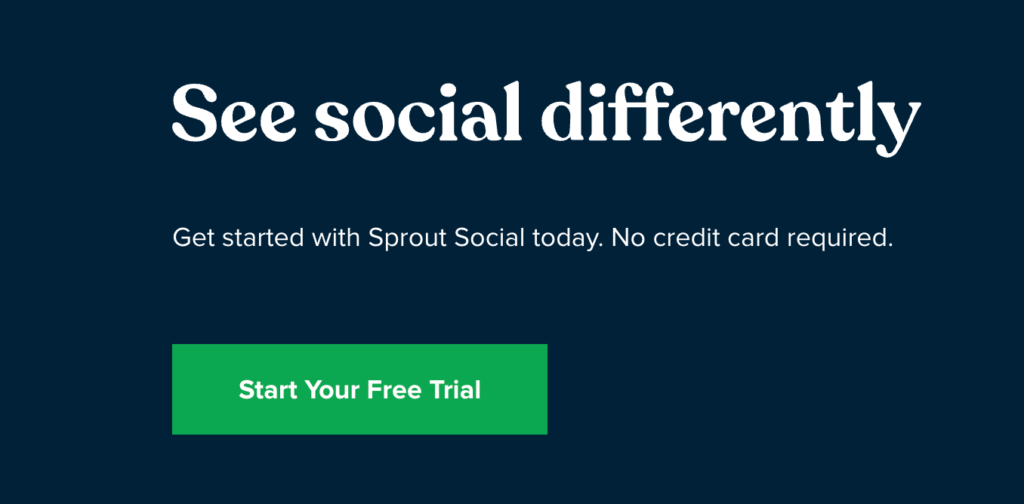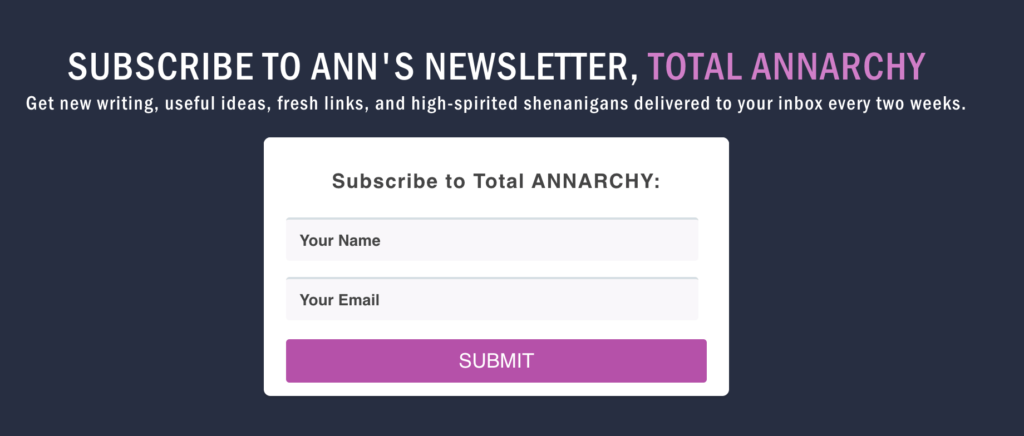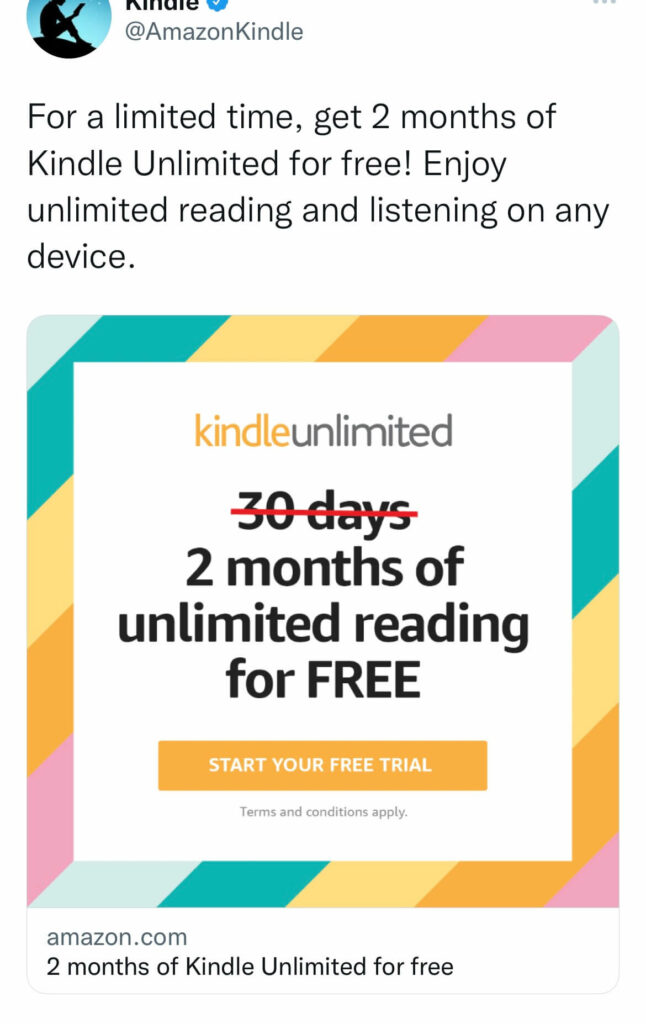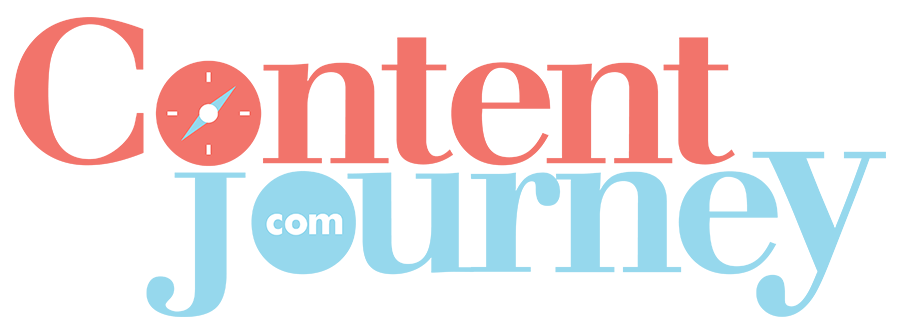CTA Best Practices with 9 Excellent Examples
I saw a content marketer on Twitter say she didn’t think all content needed a call-to-action. It gave me pause. I stopped to think about whether I agreed with the statement, which no one had responded to. Here’s what I decided:
- No, all content everywhere doesn’t need a call-to-action.
- Yes, all marketing content needs a call-to-action.
Let me explain.
I don’t need a call-to-action when I write a post on my professional blog reviewing the books I read for the month. I don’t own a bookstore. I’m not trying to sell anything. I’m simply sharing my views on my monthly reads with those looking for recommendations. I usually end those posts with “As always, happy reading.” There’s nothing to do next. I don’t have any skin in the game. If you like something you read about on my list, you can go to whatever bookstore you prefer (although I hope it’s local) and buy the book. I’ll never know unless you connect with me on social and tell me you liked it too (Thank you to those who do that.).
But when we write marketing content, we always have an outcome in mind. That end goal is our purpose for writing the web page, blog post, email campaign, or social media post. We want the reader to do something. The call-to-action tells them what to do next.
So, yes, all marketing content needs a call-to-action. It’s the content’s reason for being. Not only that, but the CTA needs to be strong and stand out so the reader wants to do the thing. This post reviews some CTA best practices to help you convince your audience to go from content consumption to action.
Understanding Calls-to-Action
Before we go any further, let’s review specifically what a call-to-action is and why you should always use one on your marketing content. If you already have a strong grasp of the topic, feel free to skip down to the meat of this post.
A call-to-action is words included in a marketing message that asks the reader to take a specific action. Your CTA can ask your audience to subscribe to your email list, learn more about your services, or purchase a product. It tells your website visitors exactly what you want them to do next and offers them a solution to their problem.
4 common types of CTAs are for:
- Newsletter Subscriptions. This CTA encourages site visitors to exchange their email address for a subscription to your newsletter delivered to their inbox.
- Lead Magnets. A lead magnet is a free piece of content you offer your website’s visitors in exchange for their contact information. It can be a downloadable graphic, checklist, e-book, or even a short video course. These CTAs offer the visitor content of greater value if they provide information.
- Purchases. Purchase or promotional CTAs encourage website visitors to buy something on your site. Often, these CTAs give them a special offer, like a one-time discount or free shipping, if they purchase right then.
- Contact. Contact CTAs encourage visitors to complete your contact form, call, or email for a product demo or more information.
CTA Best Practices with 9 Examples
Now that you understand what a call-to-action is, why you should use one in every marketing message, and what (generally) a CTA might lead your audience to do, let’s look at them in action. Here are some CTA best practices with examples.
Use Action Words
Your CTA asks the reader to do something, so you want to use action words that tell them exactly what to do next. Action words like join, start, begin, call, learn, or visit help the reader understand how to get involved and take that next step.
This pop-up subscription box on the Moz Blog is active and clear. You know exactly what they’re asking you to do.

Experiment with Design
You want the CTA to stand out from the rest of the content. The best way to make this happen is to experiment with various design elements. Consider using color, larger text, boxes, or buttons for visibility.
This example from Social Sprout was on a blog page with mostly dark text on a white background until you reached the end of the post. The CTA box stood out. And the green CTA button grabs your attention even more.

Keep Them Short
We have seen some CTAs that make you think, “Just get to the point already!” People don’t want to wade through your message to know what to do next. The best CTAs are two to five words, with the content leading up to it providing context.
CoSchedule made this pop-up CTA for their new service easy to understand with a sentence of context but kept the CTA button short and sweet.

Show Your Style
I’m a big fan of Ann Handley. She’s a great writer and a super cool person (in perhaps the least “cool” way possible). Her book, “Everybody Writes,” is one of my favorite writing books. I also adore her newsletter, “Total Annarchy.” Here’s the CTA for that. It’s pretty straightforward but uses color matching with other parts of her site, including her logo, to stand out.

Ann’s brand voice is strong in everything she does and genuine to who she is as a person. So, I wasn’t surprised, but I was delighted when I read this call-to-action for her newest book in her recent newsletter.

Even Ann’s call-to-action is thoughtful and considerate.
Use First Person
We don’t want to feel like a CTA is for anyone or everyone. We’re more likely to take action if it seems written just for us. Like the writer was addressing us specifically. That’s why using first-person language when writing a CTA is crucial. It’s the difference between “start a trial” and “start your trial.” It belongs to you. The writer intended it for you.
Check out the CTA button on this excerpt from the Yoast newsletter. The goal is for a business owner to think, “Yes, Yoast! Please help me sell more,” then click.

Instill Urgency
People are more likely to take action immediately after reading a marketing message if they think they’re supposed to or if there’s a limited supply of something. You can instill urgency in your CTAs by using time-oriented words like “today” or “now.”
Hubspot provided a great CTA best practice example with their “access now” on a free lead magnet they embedded in a post about the topic. They assume that people reading about the best video marketing are trying to break into it, so they offer a video marketing start pack in the post.

Make a Deal
People love to get a discount. We’re likely to act more quickly to get a deal. It’s mixing the point on urgency with an offer. Check out this social media example from Amazon.

Hone In
Make sure to have one clear CTA for each marketing message. You don’t want to try to get people to sign up for your newsletter, download your e-book, subscribe to your service, and give you a call as a result of the same blog post. Keep your CTA simple and focused to avoid confusing the reader and making them flee.
Neil Patel doesn’t even mince words on his opt-in. Kinda makes you wonder how many people click that they have enough traffic.

Test Them
There’s no such thing as a magic CTA that will work on everyone. Test different CTAs that fit your various content and offers to see what your audience responds to most on each platform. Then use more of what works.
Let Content Journey Help You Follow CTA Best Practices
I’m unsure what kind of response that content marketer got on her Twitter post about not using CTAs. I tried to go back and find it, but I couldn’t. My guess is that it wasn’t too favorable or perhaps easily misunderstood.
We know that content marketing messages need a purpose, and following CTA best practices makes the next action to reach that goal clear to the reader.
Writing CTAs isn’t easy. The shorter the message, the more difficult it is to write. Content Journey can create actionable content marketing messages for your business, so you don’t have to. Book a call today to discuss how we can help.







